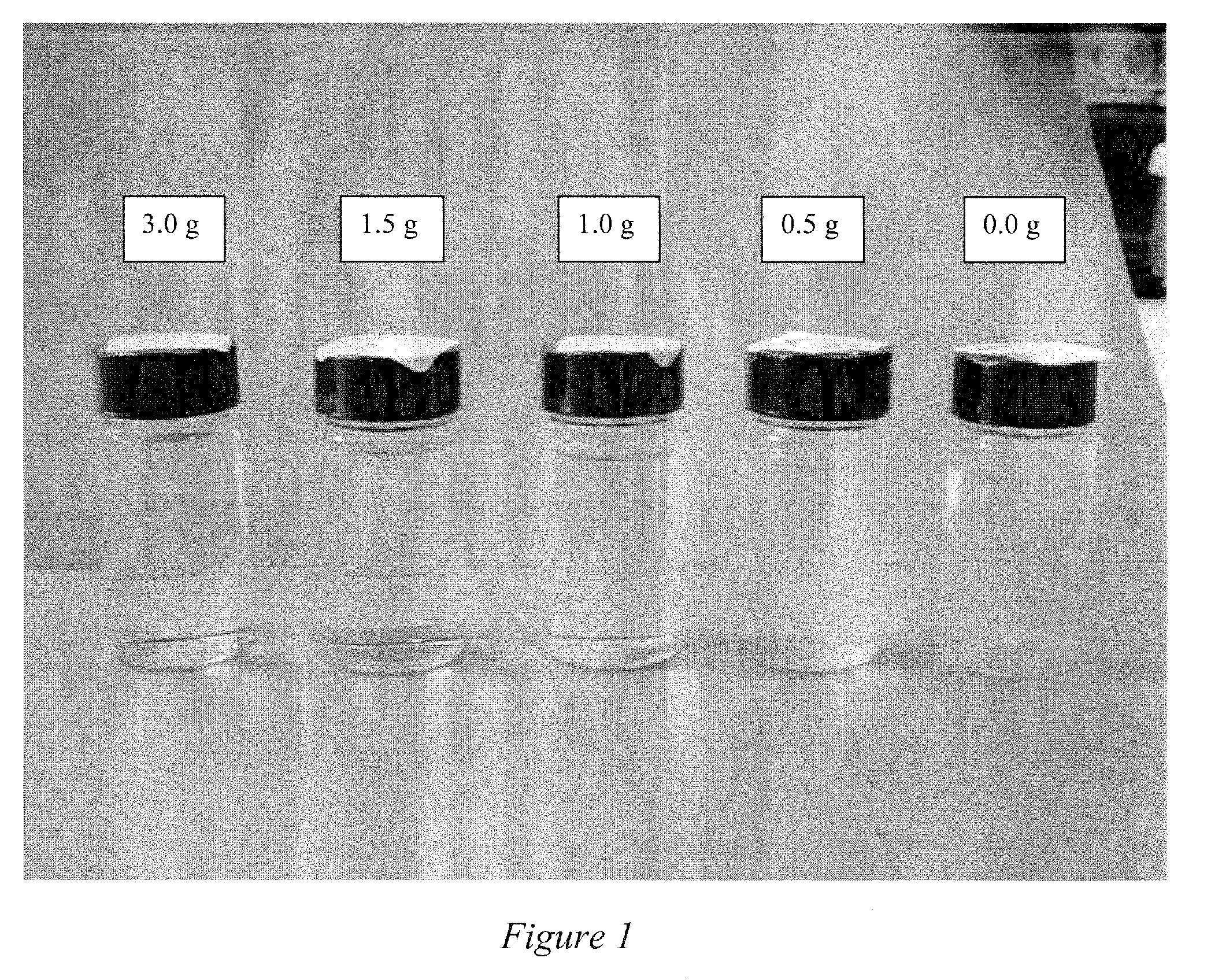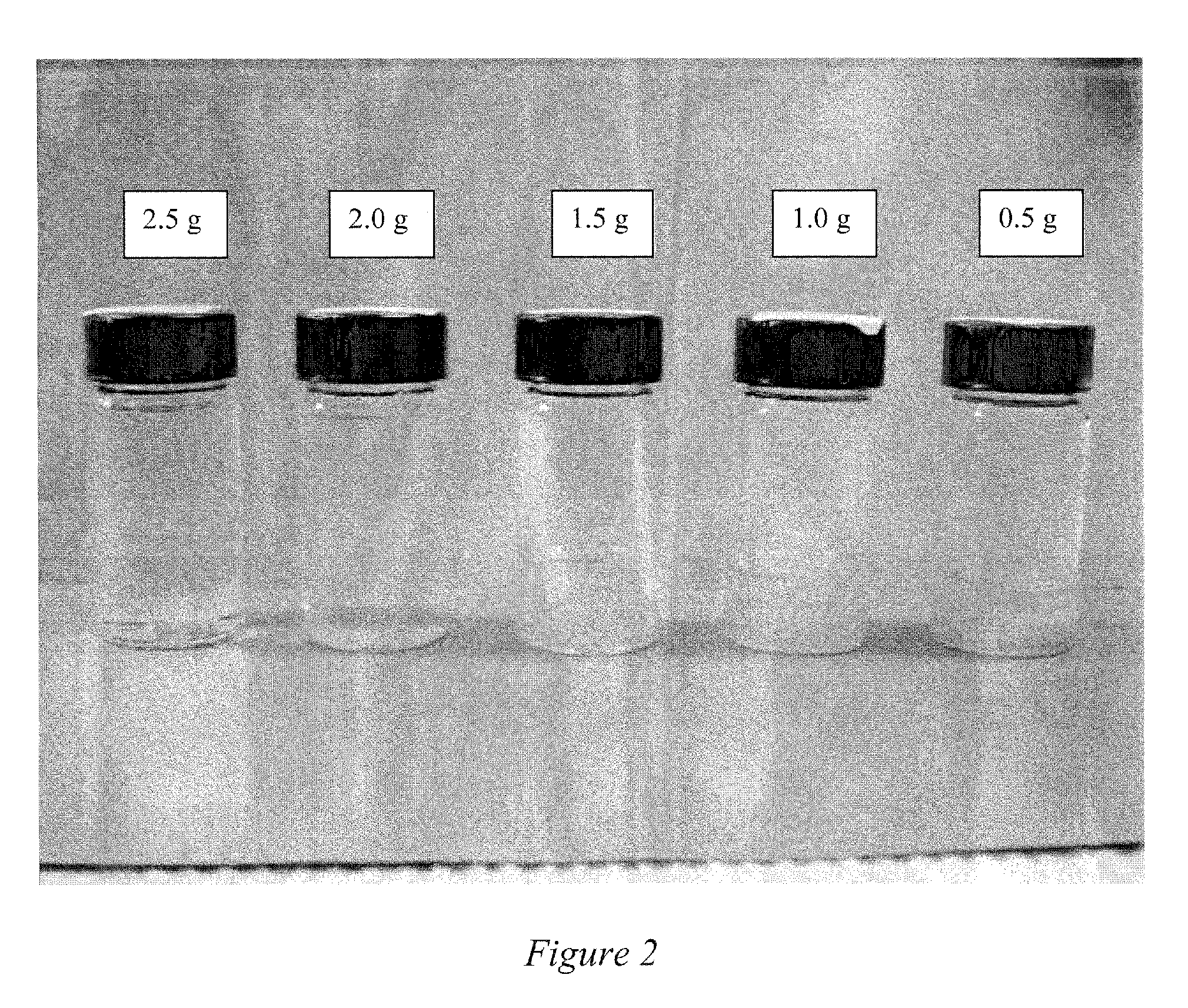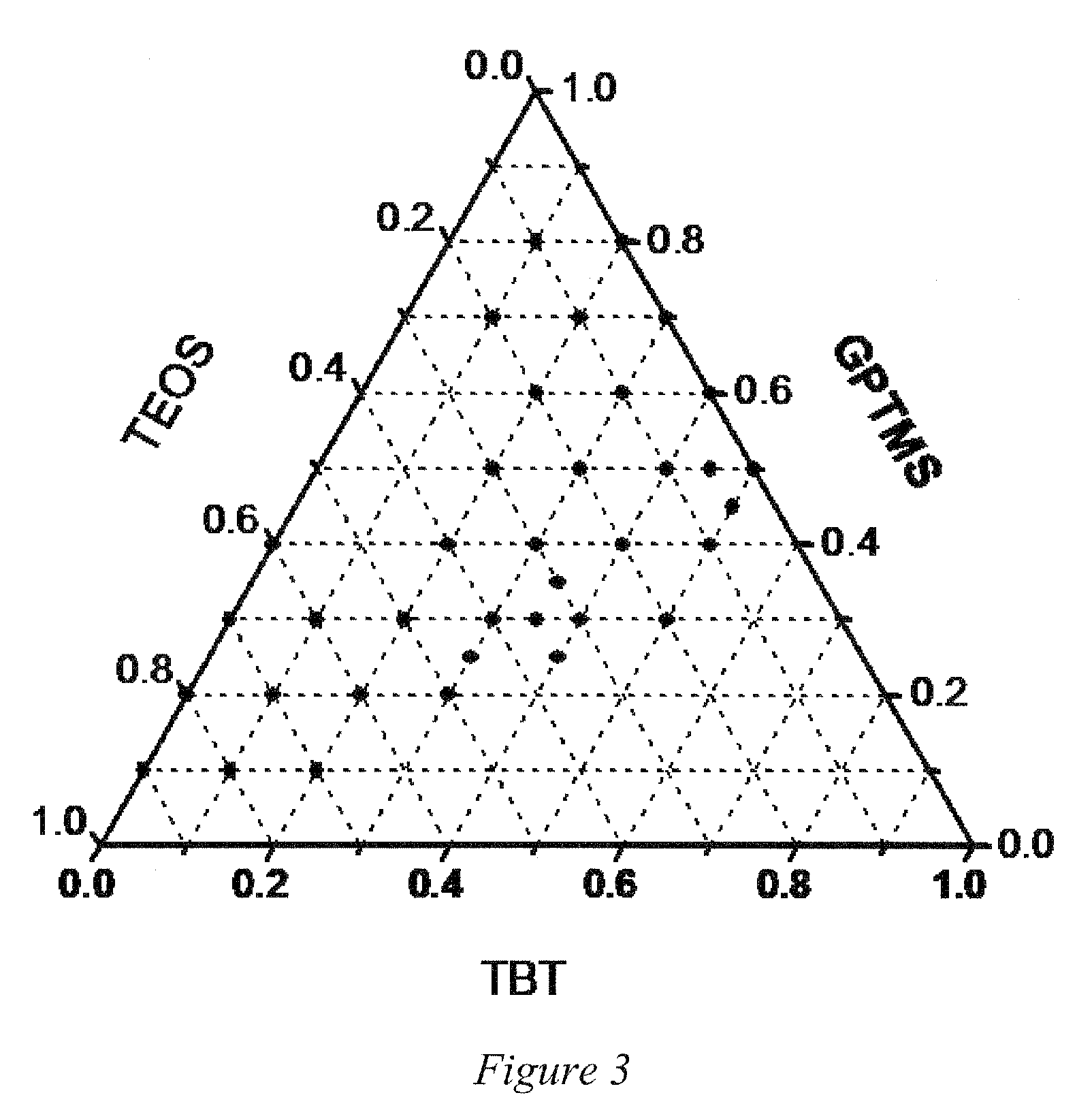Transparent inorganic-organic hybrid materials via aqueous sol-gel processing
a technology of organic hybrid materials and sol-gel processing, which is applied in the direction of instruments, optical elements, coatings, etc., can solve the problems of hard and robust coating formation and general inability to achieve high hardness with optical transparency in such systems
- Summary
- Abstract
- Description
- Claims
- Application Information
AI Technical Summary
Benefits of technology
Problems solved by technology
Method used
Image
Examples
Embodiment Construction
[0012]Embodiments of the invention are directed to water based sol-gel processing that are free of included organic solvents, although organic compounds that are often used as solvents can be released upon hydrolysis of the sol precursors in the aqueous solvent. Inorganic-organic hybrid materials are formed where organic group containing precursors are hydrolyzed and condensed with inorganic precursors in the aqueous environment. The inorganic precursors can be those that form mixed metal oxides of silicon, titanium, aluminum, or zirconium. Unlike common methods where white precipitates are formed between these metal oxide precursors in aqueous rich systems, methods according to embodiments of the invention do not form such precipitates and permit the formation of thick clear crack free glasses on a single deposition from an aqueous solution. The resulting glasses display transparencies of at least 95% in the visible range and display good mechanical properties. In some embodiments ...
PUM
| Property | Measurement | Unit |
|---|---|---|
| Temperature | aaaaa | aaaaa |
| Fraction | aaaaa | aaaaa |
| Length | aaaaa | aaaaa |
Abstract
Description
Claims
Application Information
 Login to View More
Login to View More - R&D
- Intellectual Property
- Life Sciences
- Materials
- Tech Scout
- Unparalleled Data Quality
- Higher Quality Content
- 60% Fewer Hallucinations
Browse by: Latest US Patents, China's latest patents, Technical Efficacy Thesaurus, Application Domain, Technology Topic, Popular Technical Reports.
© 2025 PatSnap. All rights reserved.Legal|Privacy policy|Modern Slavery Act Transparency Statement|Sitemap|About US| Contact US: help@patsnap.com



